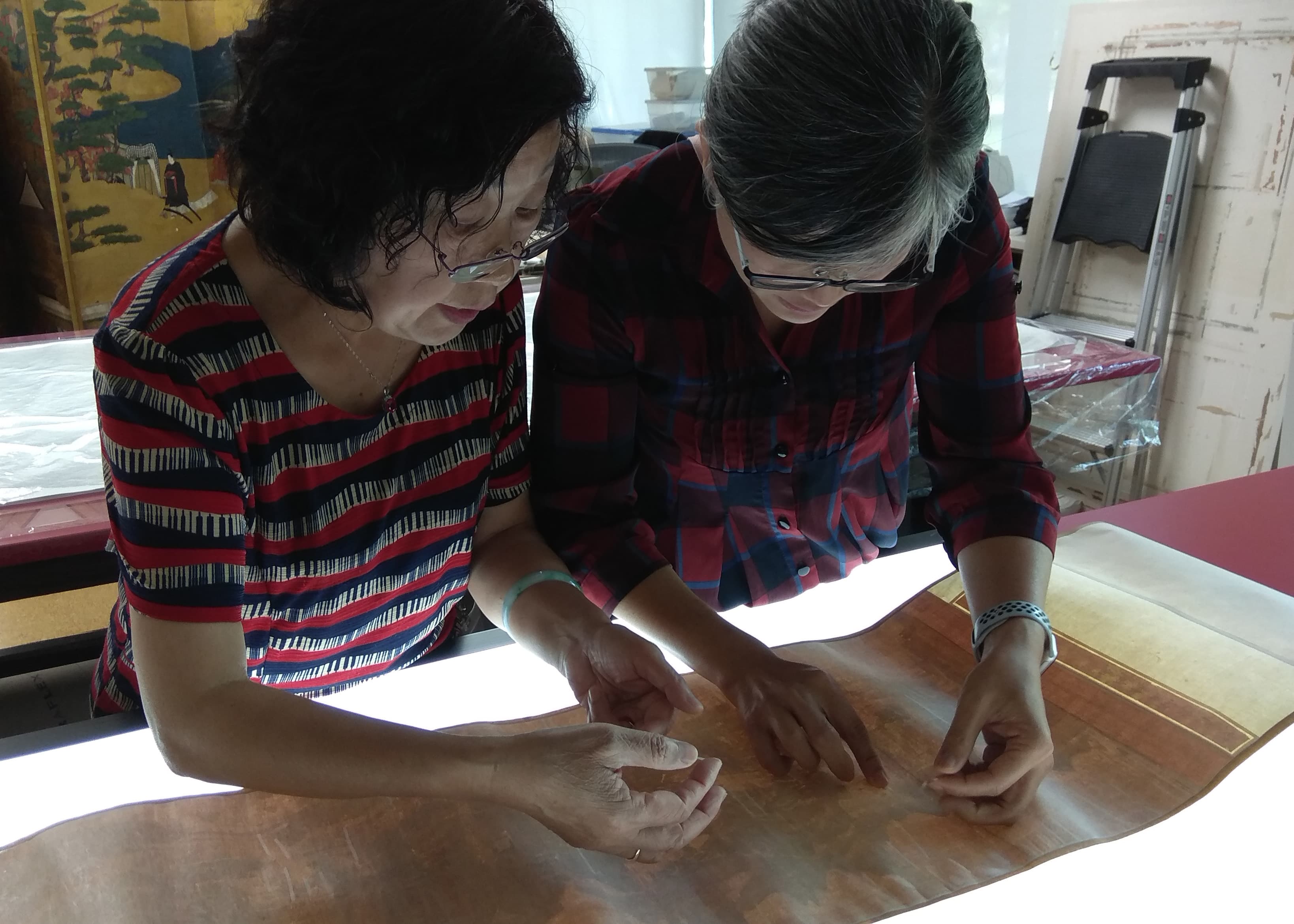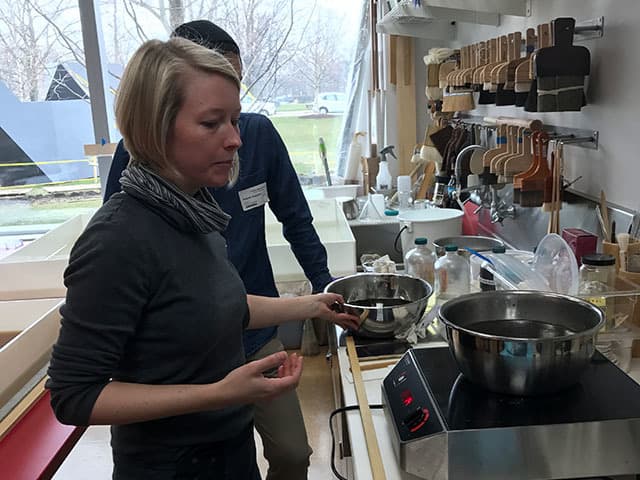Asian Paintings Conservation Lab
Only six institutions in North America have expertise in East Asian paintings conservation, and the Cleveland Museum of Art is one of them. Constructed in 2008, the museum’s Asian paintings conservation lab is responsible for examining, treating, and preserving the CMA’s renowned collection of Chinese, Japanese, Korean, and Himalayan paintings. Asian paintings are mounted in traditional formats, distinct from Western formats, such as hanging scrolls, handscrolls, folding screens, panels, and albums. This means that in East Asian paintings conservation, it is not just the painting that is of importance but also the mountings that surround the painting. The CMA has two Asian paintings conservators who not only preserve the museum’s artwork but also maintain and teach traditional mounting techniques from China and Japan that have been passed down for thousands of years. In fact, the training of East Asian paintings conservators is so important to the field that the CMA recently established the June and Simon K. C. Li Center for Chinese Paintings Conservation, which includes a fellowship in Chinese paintings conservation.
Care for these complex materials takes on a range of forms, from ensuring the proper storage and environmental conditions to treatment of degradation and damage. Treatments range from minor ones, such as consolidating unstable pigments using gelatin, to more complex ones that require the conservators to remove and replace all the mounting fabrics. For these treatments, Asian paintings conservators are reliant on tools and materials that have been handmade by specialized craftspeople in Asia and regularly consult and collaborate with colleagues around the world to acquire these unique materials. The materials include paper made from sandalwood and rice straw to create a soft, thin, and semi-transparent paper ideal for Chinese scroll formats, as well as brushes made with moose and deer bristles used to gently moisten papers with more control than a spray bottle.
While our team aims to make sure that the traditions of East Asian paintings conservation survive, they are also versed in modern scientific analytical techniques, such as X-ray fluorescence spectroscopy, and modern materials, such as synthetic adhesives and gels for cleaning. This integration of traditional and modern conservation techniques ensures the care and preservation of the important works in our collection.
Featured Projects
International Exchange
The Asian paintings conservation lab has had the honor of hosting senior conservators from China and Japan as part of a concerted cultural-exchange effort. These senior conservators not only have treated important paintings in the collection but also have passed on their traditional knowledge and their respective cultures of Asian paintings mountings to conservators working in the US. Through these cultural exchanges, the CMA’s conservators can better care for the museum’s collection.

Pinfang Zhu, a skilled Chinese paintings conservator from the Shanghai Museum, China, demonstrates applying mending strips onto the damaged areas of a Chinese handscroll to Ika Hsiao, conservator of Asian paintings.
Conservation Documentary Feature
Interviews with Asian Paintings Conservators
Interested in becoming an Asian paintings conservator? Check out the American Institute for Conservation’s (AIC) Emerging Conservation Professional Network (ECPN) interviews with CMA Asian paintings conservators Ika (opens in a new tab) and Sara (opens in a new tab).
